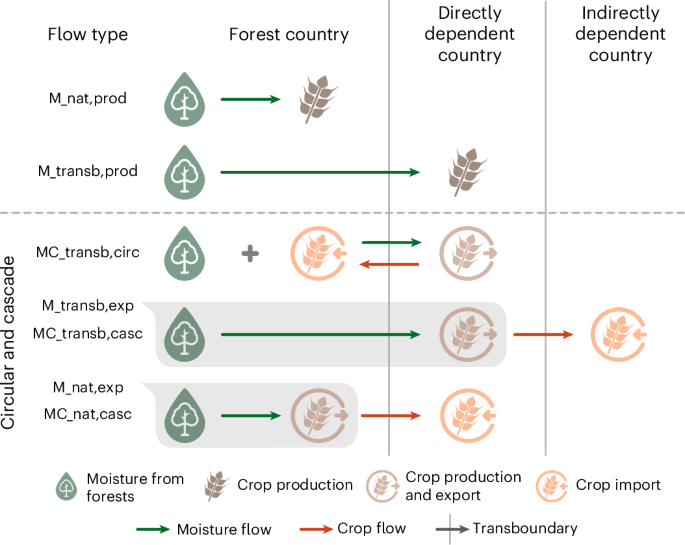Report on the Discontinuation of the USDA Household Food Security Survey and its Implications for Sustainable Development Goals
Introduction: A Critical Data Source for SDG 2 Terminated
The U.S. Department of Agriculture (USDA) is scheduled to release its final Household Food Security report. This annual survey, which provides critical data for monitoring progress toward Sustainable Development Goal 2 (SDG 2: Zero Hunger), is being discontinued. The administration cited the survey as “redundant, costly, politicized and extraneous.” This decision has significant implications for evidence-based policymaking aimed at eradicating hunger and poverty (SDG 1: No Poverty) within the United States.
Impact on Monitoring SDG 2: Zero Hunger
The Household Food Security report has served as a primary instrument for tracking food insecurity, a key target of SDG 2. The loss of this data compromises the ability to effectively measure and address hunger.
- Key Statistics from 2023: The most recent data indicates that 47.4 million people, including 14 million children, lived in food-insecure households, highlighting the scale of the challenge in achieving SDG 2.
- National Benchmark: According to Sara Bleich, a professor at Harvard T.H. Chan School of Public Health, the report “served as a consistent national benchmark, guiding solutions and bringing attention to areas of greatest need.”
- Vulnerable Populations: The data is essential for identifying and supporting the most vulnerable populations, a core principle of the SDGs, particularly SDG 10 (Reduced Inequalities).
Consequences for Evidence-Based Policy and SDG 16
Critics argue that terminating the survey undermines the principles of SDG 16 (Peace, Justice and Strong Institutions), which calls for effective, accountable, and transparent institutions. Without this objective data, the capacity for sound governance in social policy is diminished.
- Compromised Policy Evaluation: The discontinuation occurs alongside significant policy changes, such as new work requirements for SNAP benefit recipients. The absence of the survey will make it “much harder to track the impact of policy changes,” as noted by Bleich.
- Erosion of Objective Information: The loss of this data source is described as a “significant setback” that weakens the ability to ensure that policy decisions are “grounded in evidence.”
- Reduced Effectiveness in Combating Hunger: Bleich concluded that without these annual reports, “the ability to craft responsive, effective policies will be severely compromised,” directly hindering progress toward national targets related to SDG 2.
Analysis of the Article in Relation to Sustainable Development Goals
1. Which SDGs are addressed or connected to the issues highlighted in the article?
-
SDG 2: Zero Hunger
The article is fundamentally about food security and hunger within the United States. It discusses the “Household Food Security report,” which tracks the number of families dealing with food insecurity, and mentions that “47.4 million people lived in food-insecure households.” The entire narrative, including the debate over the Supplemental Nutrition Assistance Program (SNAP) and the importance of data for combating hunger, directly aligns with the core mission of SDG 2.
2. What specific targets under those SDGs can be identified based on the article’s content?
-
Target 2.1: By 2030, end hunger and ensure access by all people, in particular the poor and people in vulnerable situations, including infants, to safe, nutritious and sufficient food all year round.
This target is directly addressed. The article highlights the scale of the problem by stating that “47.4 million people lived in food-insecure households in 2023, including 14 million children.” Children are explicitly mentioned as a vulnerable group. Furthermore, the discussion around SNAP benefits and changes to work requirements directly concerns policies designed to ensure access to food for the poor and vulnerable.
3. Are there any indicators mentioned or implied in the article that can be used to measure progress towards the identified targets?
-
Indicator 2.1.2: Prevalence of moderate or severe food insecurity in the population, based on the Food Insecurity Experience Scale (FIES).
This indicator is central to the article. The “Household Food Security report” released by the U.S. Department of Agriculture is the primary tool mentioned for measuring food insecurity. The statistic provided—”47.4 million people lived in food-insecure households”—is a direct output of this type of measurement. The article’s main conflict, the potential discontinuation of this annual survey, is about losing the ability to track this specific indicator. Sara Bleich’s quote emphasizes that this report serves as a “consistent national benchmark” and that its absence would make it “much harder to track the impact of policy changes,” which is the exact function of an indicator.
4. SDGs, Targets, and Indicators Table
| SDGs | Targets | Indicators |
|---|---|---|
| SDG 2: Zero Hunger | Target 2.1: End hunger and ensure access by all people, in particular the poor and people in vulnerable situations… to safe, nutritious and sufficient food all year round. | Implied Indicator (related to 2.1.2): The data from the USDA’s “Household Food Security report.” The specific metric mentioned, “47.4 million people lived in food-insecure households in 2023, including 14 million children,” serves as a direct measure of the prevalence of food insecurity. |
Source: scrippsnews.com







